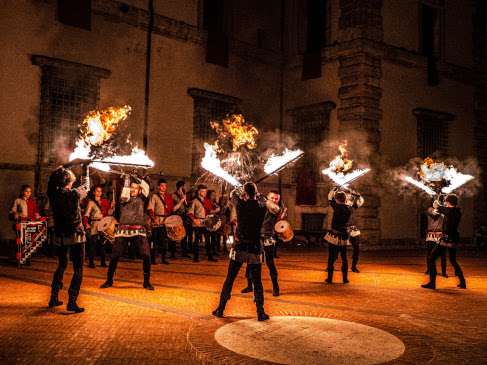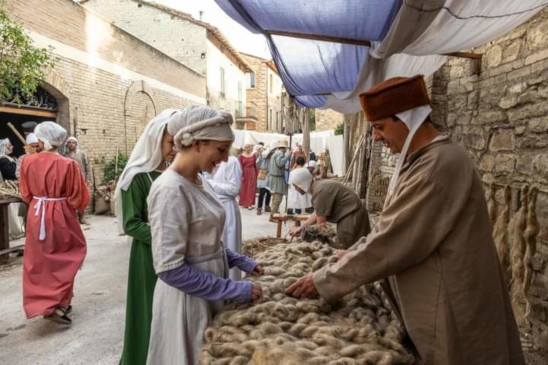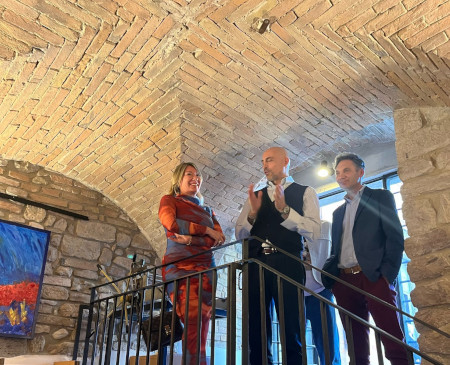by Benedetta Tintillini
Thousands of times, driving along the E45 up and down, reading the street sign and glimpsing her presence at the edge of the road, I resolved to go and visit that little church, but, you know, often the neighboring sites are the least known, as everyone’s involved in everyday businesses.
Until one day, I accept with enthusiasm the invitation of a dear friend to visit this place of which I heard so much, and I take the car finally, not to hurtle towards Perugia, but for a walk that has the small church as its goal.
Externally it looks like many other churches in our region, built with bricks, with no decorations or ornaments of any kind. I go inside and eyes wide I try to decipher what I see: the walls lined with ceramic squares, from the ceiling down, all the same size. They are the votive offerings panels to the Virgin for graces received. I knew that the particularity of the church was precisely the presence of these panels, but I would never have expected them like that… I find the votive gloomy … I think about on crutches, hands, feet, limbs of various materials, but not here, not at all, they are wonderful!
All made by master potters of nearby Deruta , the oldest were made in XVIIth century, and embrace nearly four centuries of existence, the most recent of our day. For each tile that I stop to admire I fell like the protagonist tells his story to me: the kind of life he led, his profession, the environment in which he lived, the matters to which awaited … well , it makes me a partaker of his life or part of it, even if he lived 400 years ago or is my contemporary. It ‘s a very strong emotion. I meet the woman possessed by the devil or the young man fell from a tree, or the one who survived a fire… and so on, the panels are about 700! It seemed to empathize with them, to grieve for what happened to them, as if it were happening at that moment, but with the relief of the grace received and the narrow escape .
The charm of the panels (which will surely catch your attention at first glance) is added to the devotional and religious appeal: the origin of the devotion to the Madonna del Bagno (correct name) is due to Christofono , from Casalina , who, in 1655, found on the ground a fragment of a cup with the image of the Virgin and Child, and hung it to a young oak tree in respect for the sacred image.
I would like to say a few words on that sacred image: the Madonna with Child in her arms, the baby is in a very original pose: he is not sitting on the knees of his mother, but is portrayed in the act of getting up, with the globe in his hands, facing outward .
Returning to our story : two years after, the same man, passing near the oak tree, asked the Madonna to heal his wife, very sick. Coming back home he found his wife cleaning the house in perfect health, and the devotion began, an altar was built, then a small church, up to the present one, where, behind the altar, you can still see what is left of the tree still hanging with his precious piece of pottery .
With regret I am aware of the fact that some tiles are reproductions, the church has suffered a serious theft years ago. Some tiles have been recovered and, although fragmented, rebuilt and put back in place. With regret and helplessness I get to see that in our country cultural heritage is not considered at all, and that such thefts are an impoverishment for all of us, for our culture and our memory. As someone once said before me, it is as if the French were going to dismantle the Eiffel Tower to take home a metal bar …
We hope that the little Madonna can instill in all of us and our government respect for others, pride in our roots and our culture, and the consciousness of our own potential … this would be a great miracle ….




